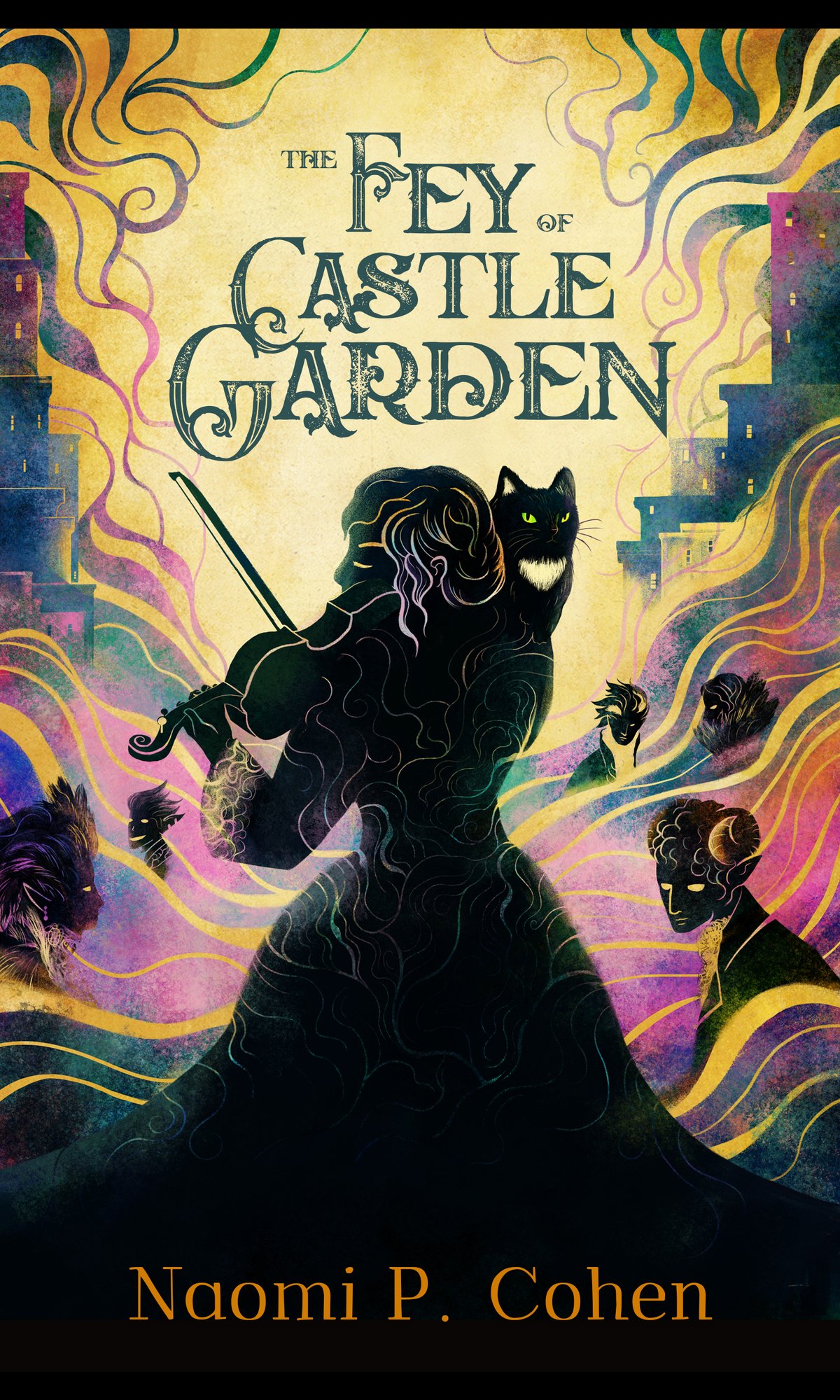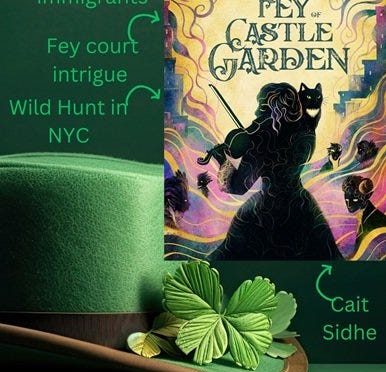The Fey of Castle Garden
by Naomi P. Cohen
A review by INFAMOUS🦀
This novel held much interest for me because it deals with a genre of fantasy filled with mythological characters which I’ve never been much acquainted with, other than by name—and some of them not even by name, even.
Irish lore is rich in feys, mysterious magical creatures who interact with humans in very peculiar ways. Feys are organized in groups or ‘courts’—each court with their own leader or queen. Sometimes these courts might have a conflict of interests but for the most part they handle their affairs with much diplomacy and old-fashioned common sense.
PLOT:
In The Fey of Castle Garden some of the fey courts from the ‘old world’ migrate to 19th Century America, and particularly to the city of New York. These feys tend to recruit mages (humans who learn the use of magic and the making of magic potions) to serve them in exchange for protection and to further expand their knowledge and studies. Our protagonist, Sofia, is one such mage who relocates from Venice, Italy to NYC under the tutelage of Queen Triona. Things escalate real quick when a mage of another rival court is found dead—mysteriously murdered. Obviously this crime sparks a blame game between the two rival courts, The court of Hounds and Queen Triona’s Court, by which Sofia is trying to build a future for herself with a career as a mage and a violinist.
Sofia and her best friend Ciaran, a cait sidhe fey who has developed very strong feelings for her and is always very protective of her, will be tossed into a dark underworld of magic, deception, and cold opportunism, before they find out who the mysterious fey murderer is and how that will have profound consequences on the entire fey community.
Who is friend? Who is foe? Pick up a copy and find out.

SOFIA, THE PROTAGONIST:
I would be lying if I said that I liked the protagonist, Sofia. I didn’t. Many of the choices she makes in life to me are sad and heartbreaking. This does not mean that the character is not well-written, but she doesn’t gain my sympathy:
Music made Sofia’s life bearable. Her violin had provided comfort when her parents told her they couldn’t afford her dowry. She could take up a trade to make a living. If she wanted to continue her education, especially in music, her options were to join a convent or be a courtesan.
Guess what option she picked? You guessed it. She decides to become a courtesan. What was a courtesan? Cohen enlightens us:
“Courtesans were higher class than common prostitutes. One man at a time and for a full living”
Sofia kind of reminds me of the college girl who goes into stripping to pay off her tuition fees, because life is tough and she has ‘no other choice’. I understand being ambitious and goal-driven, but what is the point of even gaining the whole world in exchange for losing one’s soul?
But I digress. I was personally left with a bitter taste in my mouth with this character. To balance things out, Queen Triona of the fey court was my favorite character, perhaps one of the few characters (along with Faolan, leader of the other fey court) with a hint of common sense. Triona to me was the one true protagonist and hero, in the way she loves and protects her people and particularly children. I love how she wears her heart on her sleeve but she is also a true leader, as she calls her shots from her lair in Central Park like a boss!
SOME INFAMOUS🦀 THOUGHTS:
- The setting – TFOCG undoubtedly represents a gold mine of possibilities for vivid descriptions. The narrative takes us from 1800s Venetian upper social circles to the rough immigrant-filled neighborhoods of America, and everything in between. However, I felt like the author did not exploit that to its full potential. For example, the luxurious house of the Valentino family; the deplorable slums where Hannah and her son are forced to live; the period garments worn by the characters—the dresses, the suits, the hats, the shoes—in my opinion all of that could have used further descriptive exploration to really plunge readers into that world.
- Exposition – If the author used more exposition maybe some aspects of the story would have been better digested. For example, we learn that Sofia’s first patron lied to her by omission for two months, before finding out he was a married man. I find that very far fetched even by XIX century standards, but if I am wrong, why not write about those moments Sofia shared with this man? Perhaps showcase what they shared, their chemistry, to see how this smooth operator was able to keep the charade going for two months. Or even write some of her interactions with the other patrons, even in their intimate moments—if needed—to get a better idea of how exactly everything led to her becoming this mistress for the wealthy men of society.
CONCLUSIONS:
Overall, I found this an enjoyable story though with a lot of room for improvement. Some of it propelled me to frustration, through anger, confusion, to utter despair (the character of Hannah having to rely on magical contraceptives from Sofia, as she sells her body in order to provide for her son, was gut wrenching). I feel like settings and costumes could have been richer in details, along with just more overall exposition.
The highlight for me was learning more about what a ‘cait sidhe’ is, for example, along with much more in regards to the rich Irish lore featured in this story which is absolutely fascinating.
🦀

